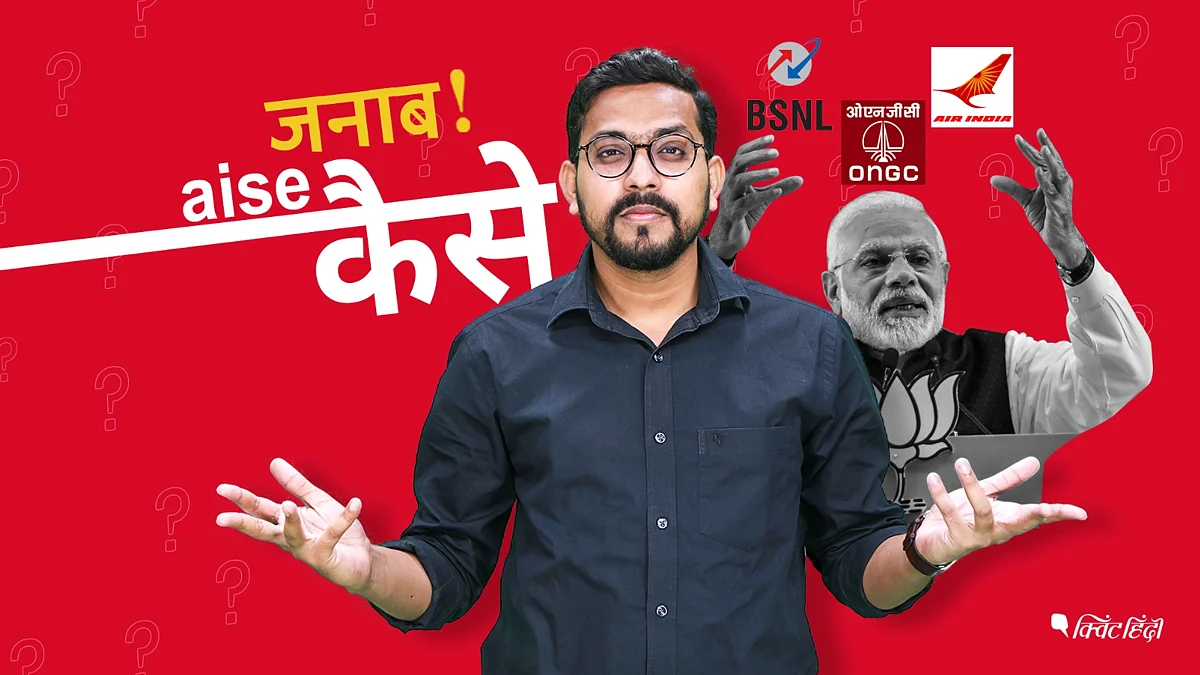Why Are Some Government-Run Bodies in Financial Crisis?
The state of some government-run institutions shows that the ‘chowkidar hasn’t done his work properly.

advertisement
PM Modi is leaving no stone unturned in promoting that he is an efficient ‘chowkidar’ (watchman) and that the previous governments were weak. He has even accused the UPA government of weakening the public institutions.
Does that mean there’s a hope for ‘achhe din’ for these institutions under the Modi government?
Well, it doesn’t seem so after looking at the state of government-run organisations like BSNL, ONGC and Air India.
BSNL, which used to give loan to the government till 2008, is snowed under the debt of more than Rs 16,000 crore. They don’t even have the money to pay the salaries of their employees.
Not just BSNL, this is also the state of many other organisations, like MTNL, ONGC, Air India, HAL and public sector banks. After all this, PM Modi asks for votes in the name of being an efficient ‘chowkidar’ and development
Using ‘war’ and ‘nationalism’ as strategy, the BJP wishes to win the 2019 elections. But the state of government-run institutions like Air India, public sector banks and BSNL might be a setback for the party. Increasing financial weakness of these government-controlled institutions are raising doubts about government policies and its ways of working.
The Ordeal of BSNL
Let’s start with Bharat Sanchar Nigam Limited:
Till the financial year of 2008, BSNL had the net cash of Rs 37,163 crore, but slowly, it slipped into a debt of Rs 16,093 crore in 2018. Because of this, BSNL failed to pay two months’ salary to its 1.76 lakh employees on time.
MTNL on the Edge of a Shutdown
MTNL is going through a similar ordeal. MTNL is also in a debt of approximately Rs 20,000 crores. The situation is pushing the company toward a shutdown.
Air India’s ‘Crash-Landing’
You must have seen political leaders take flights for election campaigns. But here’s the damage story of this government-run airline. According to audit reports, Air India had faced a deficit of a total of Rs 47,145.62 crores in the financial year of 2016-17.
Air India’s net loss is Rs 5,337 crores, which means there is a loss of Rs 15 crores per day. To save the debt-ridden company, the central government is being forced to sell the land and the real estate that belongs to BSNL, which is under the debt of Rs 40,000 crores.
Woes of Public Sector Bank
It is also important to take a look at the state of government-run banks. According to RBI, till 30 June 2014, the gross NPA of government banks, which means Non-performing asset was Rs 2,24, 542 crore.
By 31 December 2017, this amount had increased to Rs 7,24,542 crore and in 2018, these banks’ NPA increased to Rs 10.39 lakh crore.
The ONGC Turmoil
There was a time when the country’s biggest energy company, Oil and Natural Gas Corporation (ONGC), was called the ‘most cash-rich’ company. It didn’t face any debt till 2014, but going by its balance sheet, the company came under the debt of Rs 25,000 crore in 2017.
HAL’s Financial Crisis
The government’s defence and aerospace company, Hindustan Aeronautics Limited (HAL), is going through a financial crisis as well. The company has borrowed a loan of Rs 1,000 crore to pay the salaries of its employees.
Money Constraints of TIFR
According to the Department of Atomic Energy, the TATA Institute of Fundamental Research is also suffering from financial problems.
TIFR has, in fact, had stated that it will be able to pay its scientists, staff and research scholars only 50 percent of the salary in the month of February, but the employees were quickly paid the remainder of their salaries as soon as the news of a salary cut broke.
Not just the TIFR, but close to 10 autonomous organisations under the Department of Atomic Energy are going through an economic crisis.
Why did the government let such a crisis come to be? A dose of nationalism might still be acceptable, but the security of government-run institutions must also be ensured.
The state of these government-run institutions shows that the chowkidar hasn’t quite done his work properly.
(At The Quint, we question everything. Play an active role in shaping our journalism by becoming a member today.)